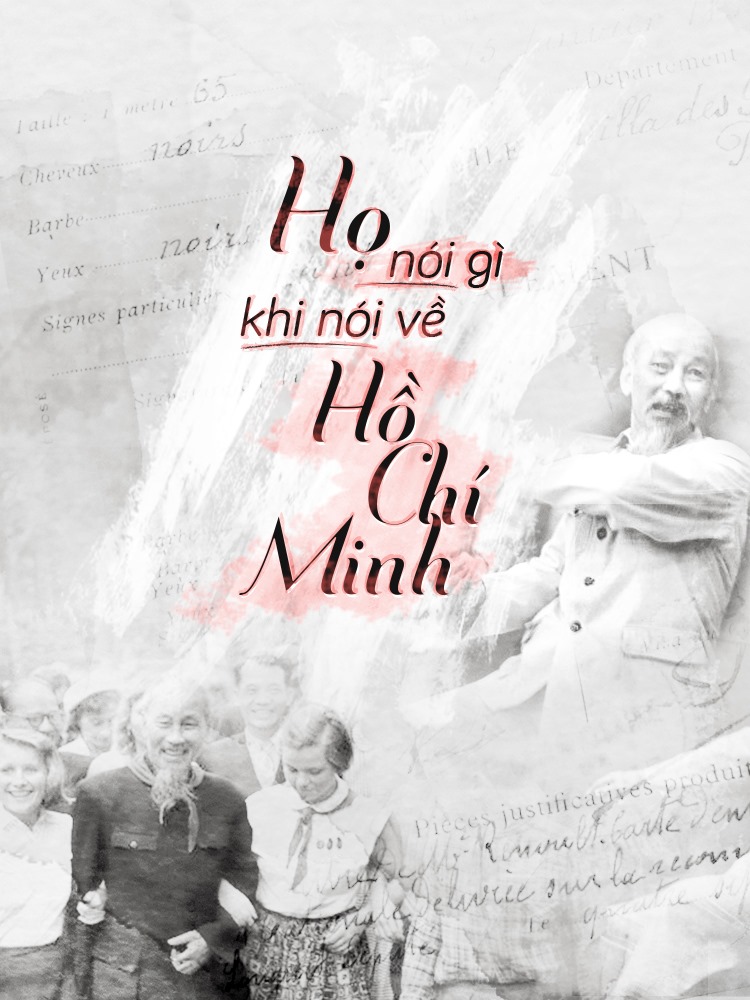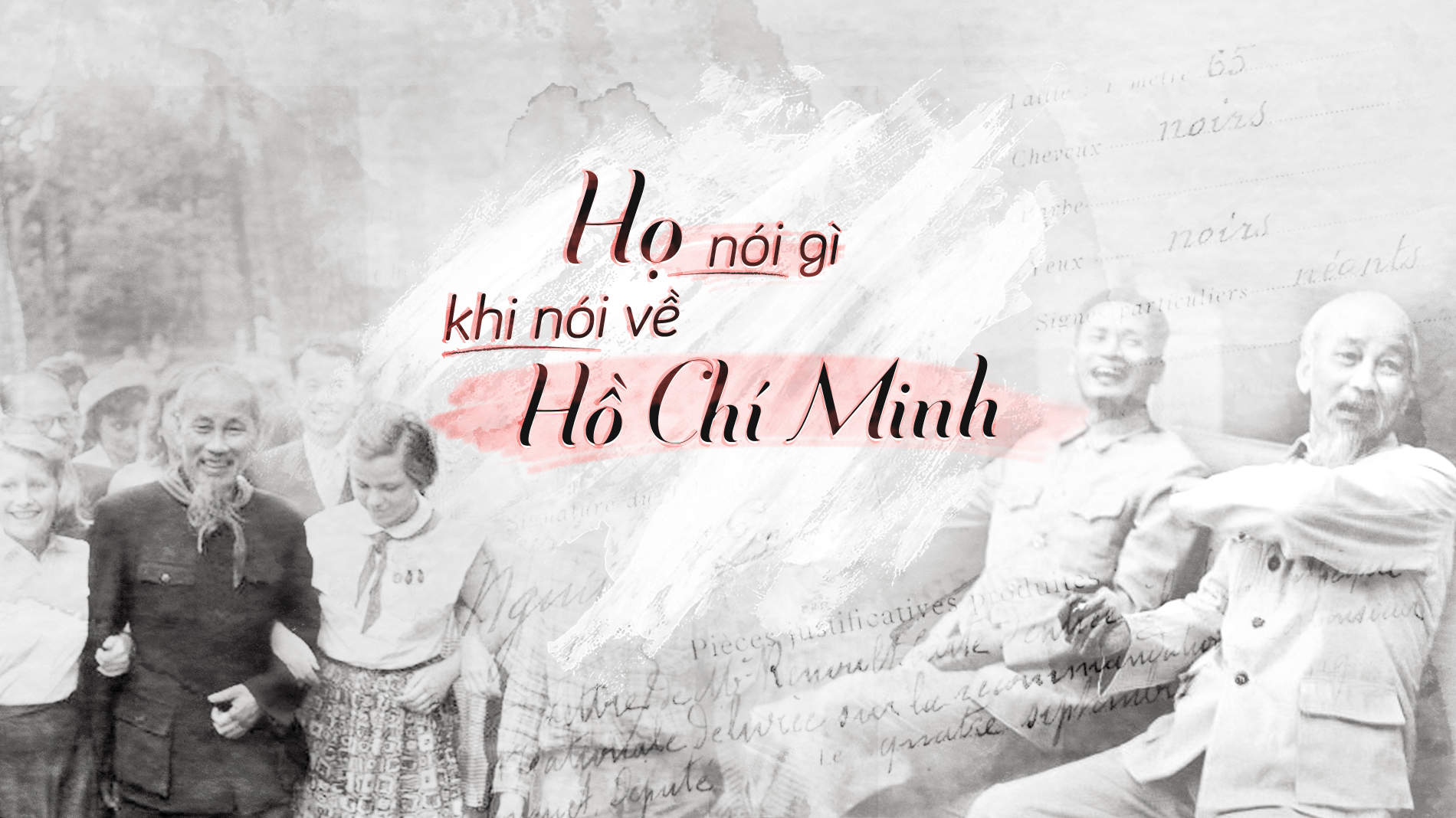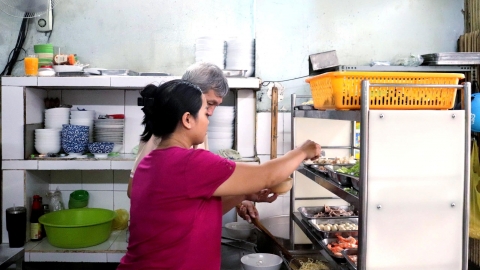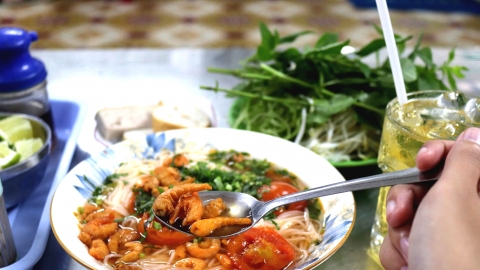Onebrave Annamese people
In the bookHo Chi Minh - the man who regained independence for Vietnam(1), the group of authors reviewed Nguyen Ai Quoc's main activities from the time he was a member of the Congrès de Tours (1920), to his journey to becoming one of the founders of the French Communist Party, attending courses in Moscow and then becoming a member of the Communist International in Asia.
The book is a synthesis of many valuable sources, meticulously recording many years of Nguyen Ai Quoc's non-stop revolutionary activities from 1919 to 1923 in France. The activities are described in great detail, thanks to reports from local police in the places where Nguyen Ai Quoc lived and worked.
The French police kept records of everything Nguyen Ai Quoc did, read, wrote, saw; even about his diet and health (once Nguyen Ai Quoc had a fever of 40°C when he was checked for flu at Hospital Cochin). They also copied his personal notes and documents. The purpose of the authorities at that time was to archive and investigate, but later, these thick and detailed documents became a symbol of a great and admirable figure in the hearts of the French people.
Especially after the Tours Congress (1920), Nguyen Ai Quoc in the eyes of the French authorities was no longer just a shy, small Annamese but had become a famous activist - a representative of the voices of many peoples in the world. Nguyen Ai Quoc even had several direct conversations with the Minister of Colonies, Albert Sarraut.
Not just a revolutionary activist, during his years in France, Nguyen Ai Quoc wrote and proudly signedNguyen Ai Quocinto fiery articles in Nhân Đạo and many other radical leftist newspapers, enthusiastically participating in political meetings to denounce the colonial regime. During those historic days, an Annamese lived and breathed the same breath of the times as a true Parisian.

Nguyen Ai Quoc speaks at the French Communist Party Conference, Paris, 1920.
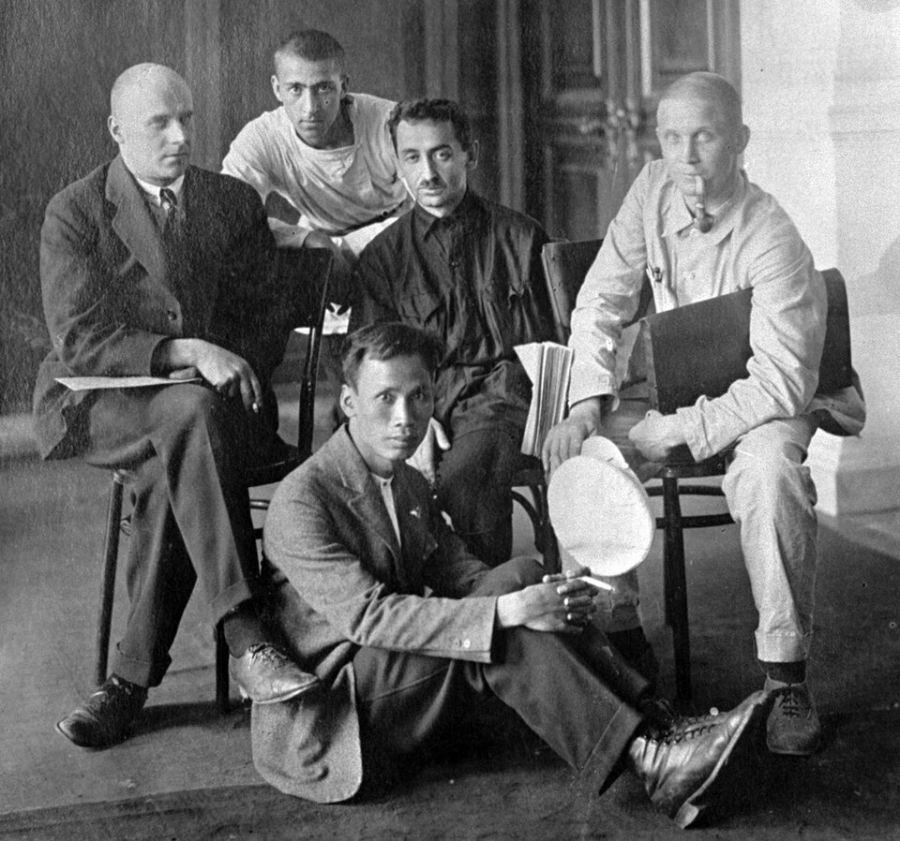
Nguyen Ai Quoc with his Chinese alias "Chen Vang" photographed at the Comintern Conference in Moscow, 1923.
Besides his life devoted to the National Liberation Revolution, Nguyen Ai Quoc still had his own rich and admirable inner world. In 1920, Nguyen Ai Quoc, then 30 years old, often went to see art performances at the Salon d'Automne, visited museums, the Olympia concert hall... Besides a close friend named Marie Brière, he also had many friends, most of whom were in the left-wing community. As author Vu Dinh Huynh affirmed, he knew radical activists (and later communists) such as Henri Barbusse or Paul Vaillant-Couturier, and also thoughtful artists - in a period when the world was in constant change.
In November 1922, Nguyen Ai Quoc personally participated in an art show at the Salle Auguste-Comte - Saint-Séverin, where his artworks were exhibited for the first time. The show was organized by a liberal-minded lawyer, Lucien Barquissau, and the attendees included a number of professional artists - among them two modernist artists: Wladimir de Terlikowski and Louis Anquetin.(2).
In addition to his photo editing work, to support his life in Paris, Nguyen Ai Quoc also illustrated for the newspaper.Le Pariaand receive "artistic portrait" drawings on request(3).

Right corner: an advertisement by Nguyen Ai Quoc in a French newspaper with the content (roughly translated): "Introduce to your readers and friends - Artistic portraits - Drawings from any original documents - from 20 francs and framed from 40 francs."
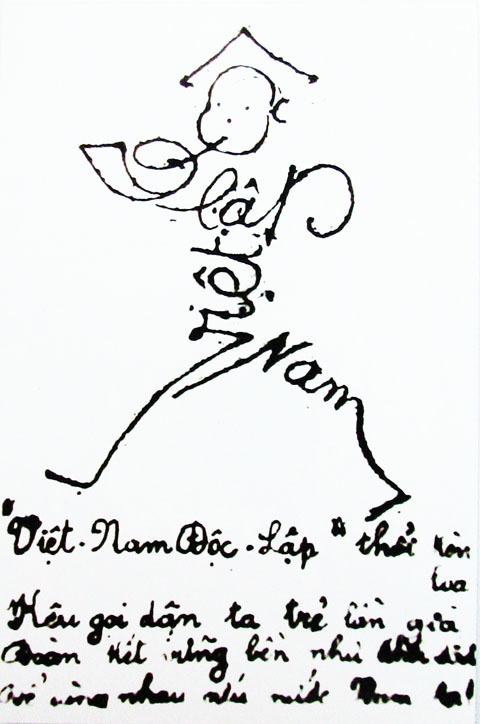
Notes of Nguyen Ai Quoc. (1941)
In June 1946, Nguyen Ai Quoc returned to France under the name of Ho Chi Minh - President of the Democratic Republic of Vietnam to attend the Fontainebleau Conference. He stayed in Paris from June 22 to September 15 and, in addition to the time spent on the national cause, he still spent a little time each day to write about his activities during his return to France.(4). According to his notes (daily, sometimes hourly), he met with many individuals in all different professions - from politicians, activists to artists. He mentioned the painter Vu Cao Dam and his beautiful paintings in Paris (the artist later recreated the bust of Ho Chi Minh and dedicated it to France); to meeting the journalist Andrée Viollis and the co-founders of the Franco-Vietnamese Association.
Not recorded, but according to Vu Dinh Huynh, Uncle Ho's secretary at that time, during his stay in France, there was also a meeting between Ho Chi Minh and the famous painter Pablo Picasso. The special meeting was recounted by Mr. Vu Dinh Huynh as follows:(5):
One day, Uncle called me and said:
- Change your military uniform and come with me in civilian clothes right now.
When getting in the car, after a while, Uncle Ho said:
- Today, we visit the famous painter Picasso.
I was surprised:
- Do you also know the painter Picasso?
He said:
- Even if we didn't know each other before, when we came to the capital city of Paris, we would still have to greet a mysterious painter whose art captivated many people.
Uncle Ho came unannounced. When Picasso's servant brought Uncle Ho near the door, the artist recognized him. He quickly ran over:
Hello Mr. Nguyen!
The two hugged each other. Then Picasso took a step back and looked at Uncle Ho:
- You age so quickly, but your eyes are still young and brighter than when we met at the Clarté group headquarters.(6).
Picasso took Uncle Ho to see his gallery. Uncle Ho held each painting, in absolute silence. I saw the emotion clearly on his thoughtful face. When he returned to the tea room, Picasso told Uncle Ho:
- Give me some advice.
He said:
- We came to admire your art. Any comments about Picasso's paintings are just the outlines of the frame. Please spare me, a person who is not very knowledgeable about the art of painting.
Picasso laughed comfortably, his voice brightening:
- I still remember the picture you drew in the newspaper Le Paria, you signed Nguyen Ai Quoc in Chinese characters. That day I told Henri Barbusse: "With just these few strokes we can see a beautiful thought, a beautiful soul hidden inside." If you had continued your artistic career, who knows, there might have been a painter Nguyen Ai Quoc. But today, Mr. Nguyen is President Ho, the leader in the struggle for independence and freedom of his people and of other oppressed peoples.
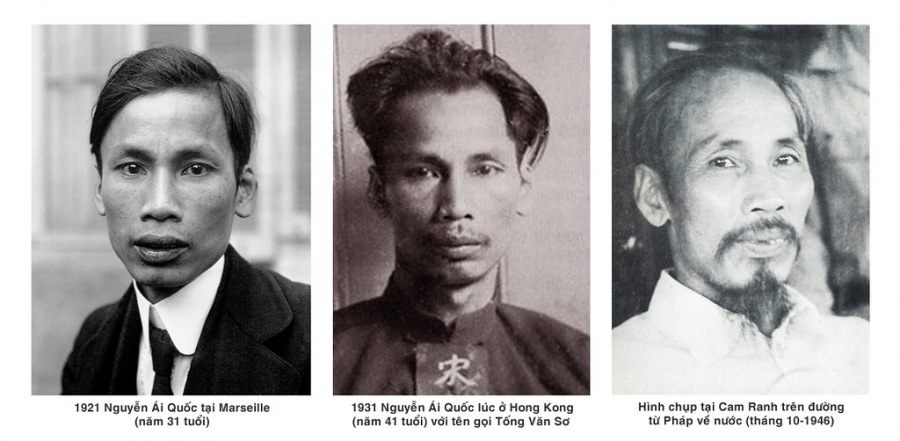
"An individual who always yearns for peace"
MagazineTimeThe leading American magazine has published 5 portraits of Ho Chi Minh as cover photos, on each occasion commemorating a historical event that occurred in Vietnam - this is an honor that not every head of state can "receive". In one publication, the magazine even devoted 5 pages to reporting on Ho Chi Minh, his personality and career, along with Vietnam's victory over France in the Dien Bien Phu campaign.
Also onTime, they quoted Jawaharlal Nehru - the great revolutionary of India: "He was a lovable and extremely friendly person, an individual who always longed for peace".
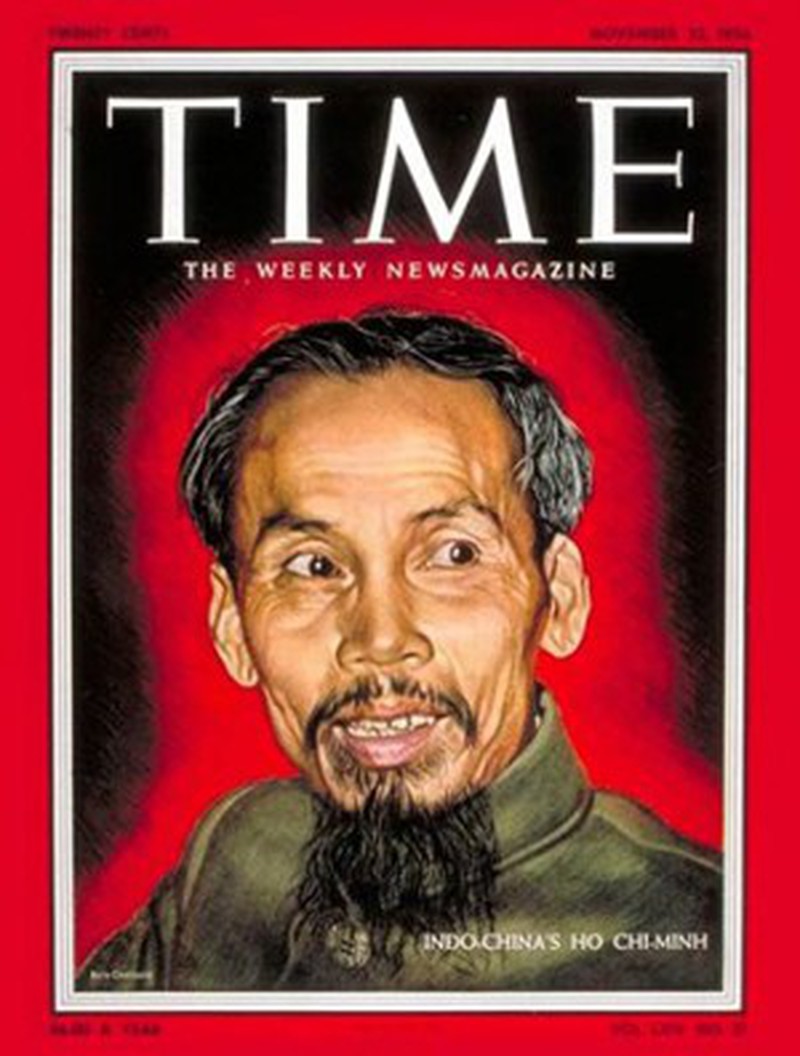
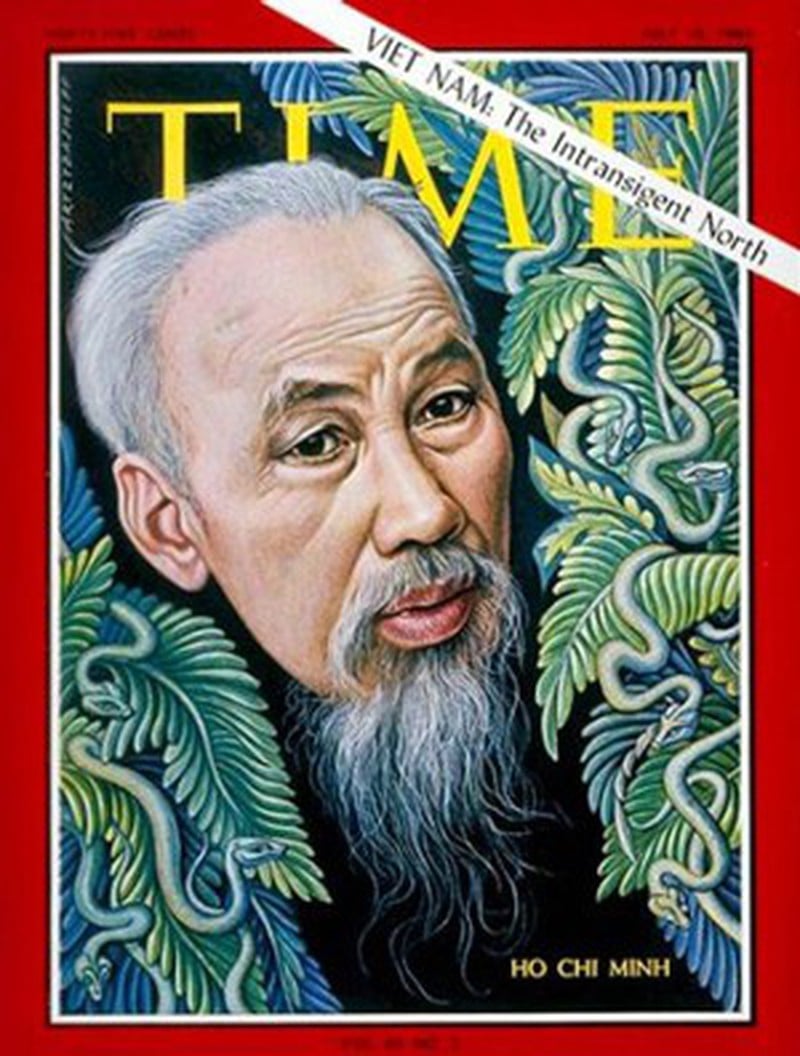

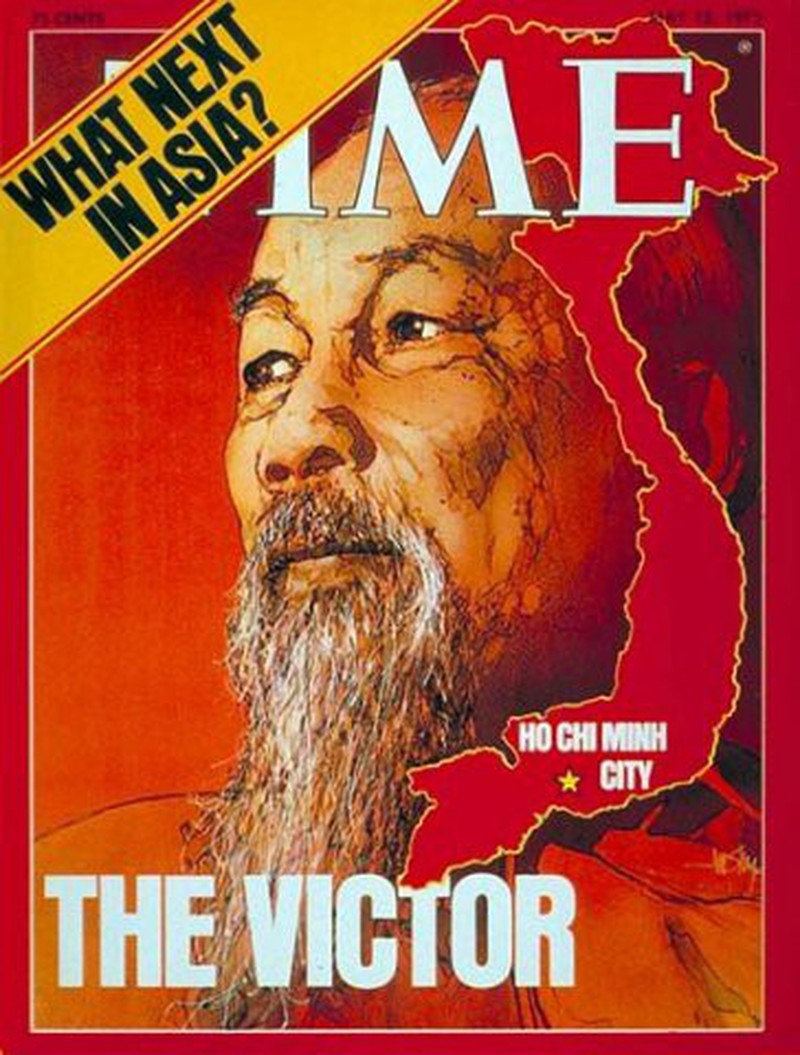
“Behind the soft appearance is a strong, brave, indomitable spirit…” - the late President of Chile, Salvador Allende, when talking about Ho Chi Minh - “At first, many Westerners were not convinced, but after a while, many of them realized that his special clothes proved that no matter where he was, among the elite or among the masses, he never forgot that he was a part of the flesh and blood of Vietnam... If anyone wants to find words that can summarize everything about Ho Chi Minh, those words are:simple and very humble".
In an article titled “Ho Chi Minh - Vision of Victory” published in the magazineIn AsiaGerman author Dierk Szekielda once wrote that “my admiration for President Ho Chi Minh and the vitality of Vietnamese poets has inspired me to write these touching lines”. Dierk Szekielda praised President Ho Chi Minh as a man of extraordinary qualities.
TimesManila(Philippines) once called President Ho Chi Minh an icon of Asia because of his success in leadership, an exemplary role model, wholeheartedly serving the interests of the people, making modern history, and therefore, he is one of the "the most noble and respected figure of the age”.
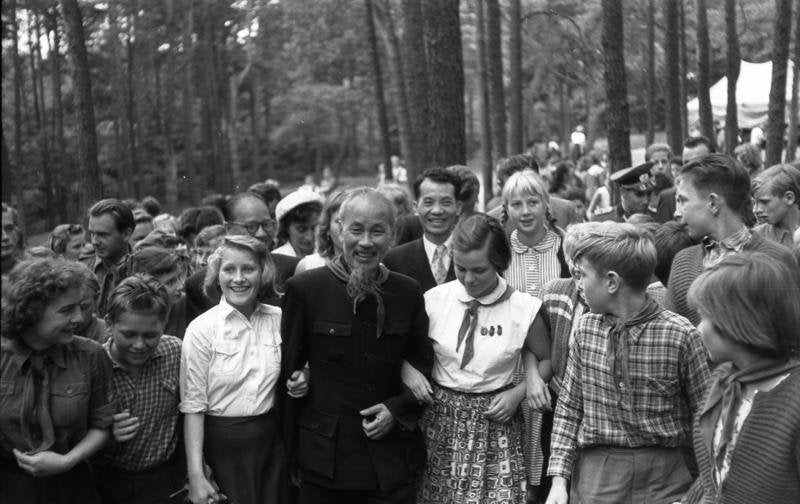
Wilfred Burchett was one of the few Western journalists who was closely associated with the Vietnamese people during the two resistance wars against French colonialism and American imperialism. Until his death in 1983, he was a loyal friend of the Vietnamese people, always supporting Vietnam in international forums.
Wilfred Burchett met President Ho Chi Minh in Thai Nguyen in late March 1954, just before the battle of Dien Bien Phu. In the bookNorth of the 17th parallel, the journalist recalled the meeting: “It was hard to believe that just a few hours after arriving, we were sitting face to face with this legendary revolutionary leader. His bright, sparkling black eyes, his thin beard, the face we had known from photographs and portraits for many years. He appeared unannounced, a windbreaker draped loosely over his shoulders, walking briskly with a long bamboo stick, wearing a pith helmet high above his broad eyebrows. After the greetings, he put us completely at ease with his fluent French and English (and said a few words in Italian to my Italian colleague). We asked President Ho why he paid so much attention to Dien Bien Phu. What was actually happening there?
“This is Dien Bien Phu,” he said, turning his pith helmet upside down on the table. “These are the mountains,” his slender, strong fingers traced the outer edge of the helmet, “and that is where we are.”
“Dien Bien Phu. There – there are French troops. They cannot get out. It may take a long time, but they cannot get out,” he repeated.

After the crisis and collapse of the Soviet Union and the Eastern European socialist countries, many scholars still affirmed that we need to learn from Ho Chi Minh the qualities demonstrated through his long revolutionary struggle.
After meeting him, American journalist Harrison S. Salisbury wrote: “He lived simply and austerely in a small and simple house behind the old French Governor's Palace in Hanoi. He was so polite that when serving tea to guests, he often gave roses to female guests and joked cheerfully with male guests; it felt as if all the best, most romantic and true things could be found in this person…”.
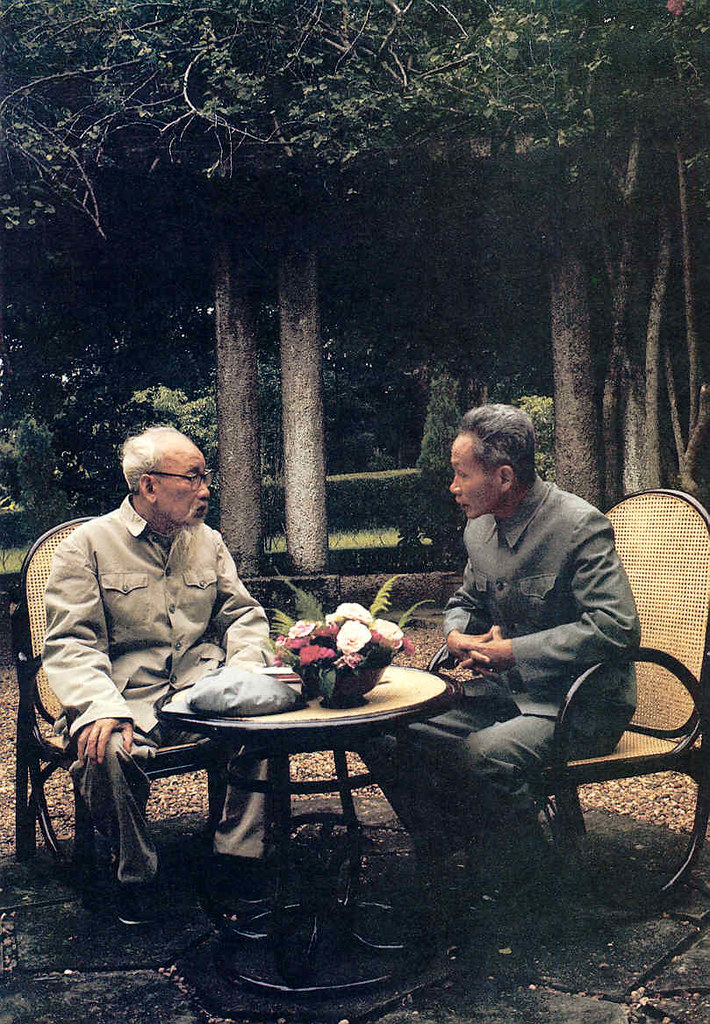

Dr. Modagat Ahmed, Director of UNESCO Asia-Pacific Region, Special Representative of UNESCO Director-General emphasized: “There are only a few historical figures who have become part of the modern world’s legend while they were still alive. Ho Chi Minh is clearly one of them. He will be remembered not only as a liberator of his homeland and colonized people, but also as a modern sage who brought a new vision and hope to those who are fighting relentlessly to eradicate injustice and inequality from this Earth.”
On November 12, 2013, President of the Russian Federation V. Putin came to Hanoi for an official visit to Vietnam. He visited President Ho Chi Minh's residence and then wrote down many of his thoughts in the guestbook. And President Putin's conclusion, perhaps, also represents the conclusion of all discussions around the world about him.
"As a great man, an outstanding personality, history will forever remember Ho Chi Minh."
Reference
(1) “Ho Chi Minh - the character who regained independence for Vietnam” - Le Monde Publishing House (France), 2015
(2) According to “Le Radical”, November 15, 1922
(3) According to “L'Émancipateur”, April 15, 1923
(4) “President Ho's Travel Diary - Four Months in France”
(5) According to "Uncle Ho - an immense love" - Kim Dong Publishing House, 2010
(6) In 1911, Uncle Ho - then 21 years old, just set foot on French soil - met and got to know painter Picasso. Through participating in a number of artistic activities, Uncle Ho and Picasso met many other artists in the Clarté (Light) group.





